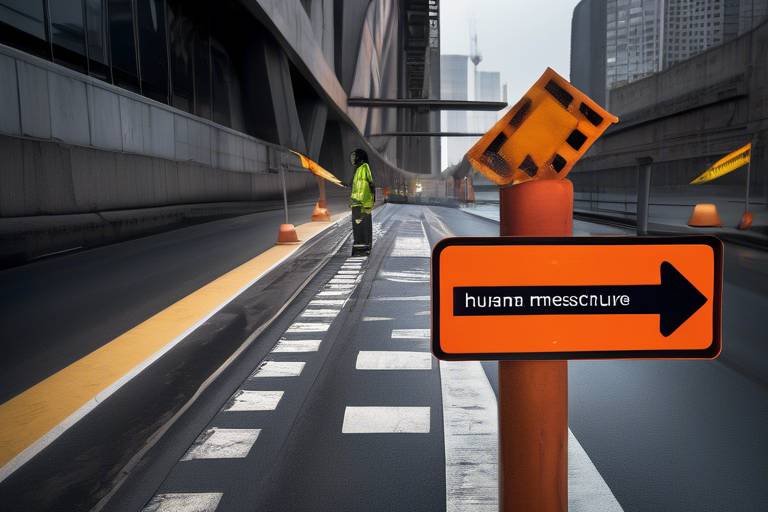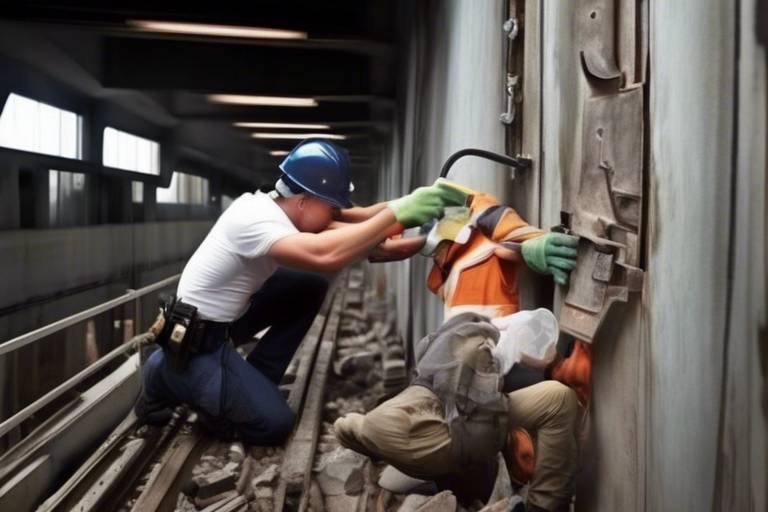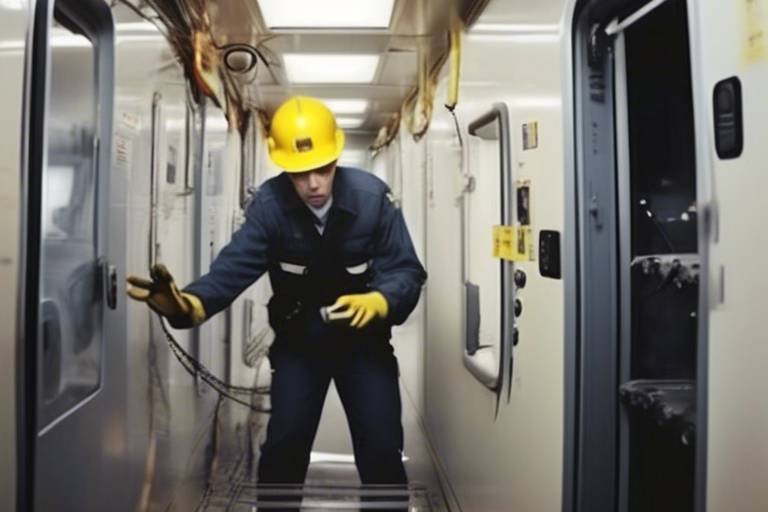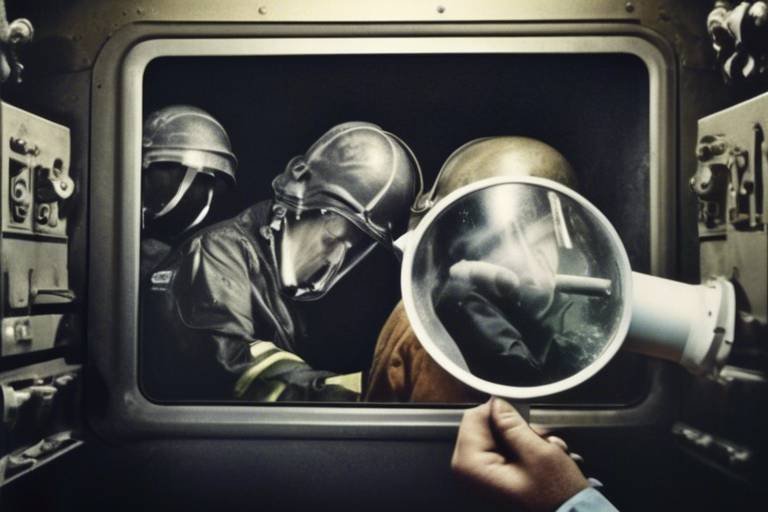Safety Measures: The Crucial Role of Human Behavior
When we think about safety measures, it’s easy to focus on the equipment, protocols, and technologies designed to keep us safe. However, the real game-changer often lies in human behavior. Yes, you heard that right! The actions, attitudes, and perceptions of individuals play a monumental role in how effective safety measures are in any environment—be it a workplace, a public space, or even at home. Imagine a well-equipped factory with all the latest safety gear, yet accidents still occur because someone ignored a protocol. This starkly illustrates that human behavior can either be the strongest link in the safety chain or its weakest point.
In today's fast-paced world, where distractions are rampant and pressures are high, understanding the psychology behind safety compliance is crucial. Why do some people adhere to safety protocols while others flout them? What drives individuals to prioritize their safety and the safety of others? These questions are fundamental to creating a culture where safety is not just a checkbox but a core value. By examining the psychological factors that influence behavior, organizations can develop strategies that not only enhance compliance but also foster a sense of personal responsibility among employees.
Moreover, consider the ripple effect of one person's behavior on a team. A single employee who consistently follows safety protocols can inspire their colleagues to do the same, creating a positive feedback loop that strengthens the entire safety culture. Conversely, one individual who disregards safety measures can lead to a domino effect of negligence, putting everyone at risk. It's like a game of dominoes—one wrong move can topple the entire structure. Therefore, understanding the social dynamics at play is essential for cultivating an environment where safety is prioritized.
In essence, the role of human behavior in safety measures cannot be overstated. It’s about creating a mindset where safety is seen not just as a requirement, but as a shared value that everyone participates in. This requires ongoing education, effective training programs, and a commitment to fostering open communication about safety issues. In the following sections, we will delve deeper into the various aspects of safety compliance, including the impact of personal experiences, social norms, and leadership on safety culture.
Understanding the psychological factors that influence safety compliance can help organizations foster a culture of safety awareness and adherence among employees, reducing the likelihood of accidents and injuries.
Effective training programs are essential for instilling safe practices in individuals. This section discusses the methods and approaches that enhance safety education and promote responsible behavior in different settings.
Behavioral-based safety programs focus on modifying individual behaviors to enhance safety. This subheading delves into the principles and effectiveness of these programs in reducing workplace incidents.
Incorporating feedback mechanisms in safety training can significantly improve learning outcomes. This section highlights the importance of constructive feedback in shaping safe behaviors among employees.
Peer influence plays a crucial role in shaping safety behaviors. This subheading examines how social dynamics within teams can enhance or undermine safety compliance.
Leadership commitment is vital for cultivating a strong safety culture. This section explores how leaders can inspire and motivate employees to prioritize safety in their daily activities.
An individual's perception of risk greatly influences their decision-making processes. This subheading discusses how understanding risk perception can lead to better safety outcomes.
Personal experiences, both positive and negative, shape an individual's approach to safety. This section analyzes how past incidents can influence future behavior regarding safety precautions.
Social norms significantly affect safety compliance. This subheading explores how collective attitudes and behaviors within a group can either promote or hinder adherence to safety measures.
Implementing effective strategies to improve safety culture is essential for organizations. This section outlines practical steps that can be taken to foster a proactive approach to safety among employees.
- What are the key factors that influence safety behavior? Human behavior is influenced by psychological factors, training, peer influence, and leadership commitment.
- How can organizations improve safety compliance? By fostering a culture of safety, providing effective training, and encouraging open communication.
- What role does feedback play in safety training? Constructive feedback helps reinforce safe behaviors and improve learning outcomes among employees.
- How can personal experiences shape safety behavior? Past incidents can significantly influence an individual's perception of risk and adherence to safety measures.

The Psychology of Safety Compliance
Understanding the psychological factors that influence safety compliance is like peeling an onion—there are layers upon layers of reasons why individuals behave the way they do when it comes to safety measures. At the core, people are driven by a mix of fear, motivation, and social influences. For instance, when individuals feel that their personal safety is at risk, their compliance with safety protocols often increases dramatically. This instinctive response is rooted in our survival mechanisms, which can sometimes overshadow rational thinking.
Moreover, the perception of risk plays a pivotal role in shaping safety behavior. If an employee perceives a task as dangerous, they are more likely to engage in safe practices. However, if they underestimate the risks involved, they might neglect safety measures altogether. This discrepancy can lead to a culture where complacency breeds accidents. To combat this, organizations need to create an environment where the importance of safety is consistently communicated and reinforced.
Another fascinating aspect is the influence of social dynamics. Humans are inherently social creatures, and our behaviors are often shaped by those around us. When safety compliance becomes a norm within a team, individuals are more likely to follow suit. Conversely, if they observe colleagues disregarding safety protocols, they may feel justified in doing the same. This is where the concept of peer influence comes into play, highlighting the need for a collective commitment to safety.
To further illustrate this, consider the following table that summarizes key psychological factors influencing safety compliance:
| Psychological Factor | Influence on Safety Compliance |
|---|---|
| Fear of Consequences | Increases adherence to safety protocols when individuals understand the risks involved. |
| Peer Pressure | Can either promote or undermine safety practices, depending on the group norm. |
| Risk Perception | Individuals with a heightened sense of danger are more likely to comply with safety measures. |
| Past Experiences | Previous incidents can significantly shape an individual’s future safety behavior. |
In conclusion, fostering a culture of safety compliance requires a deep understanding of these psychological factors. Organizations must actively engage with their employees, addressing their fears and motivations while promoting positive social dynamics. By doing so, they can create a safer work environment where compliance is not just a requirement but a shared value embraced by all.
- What is safety compliance? Safety compliance refers to the adherence to safety regulations and practices designed to prevent accidents and injuries in the workplace.
- Why is understanding psychology important for safety compliance? Understanding psychology helps organizations tailor their safety training and policies to address the underlying motivations and fears of employees, enhancing compliance.
- How can peer influence affect safety behavior? Peer influence can either encourage safe practices when safety is valued by the group or lead to risky behavior if safety norms are not prioritized.
- What role does leadership play in safety culture? Leadership sets the tone for safety culture by demonstrating commitment to safety practices and inspiring employees to prioritize safety in their daily activities.

Training and Education
When it comes to ensuring safety in any environment, effective training programs play a pivotal role. Think of safety training as the foundation of a sturdy building; without it, everything else can come crumbling down. It's not just about following rules; it's about instilling a mindset that prioritizes safety in every action. Organizations need to adopt a comprehensive approach to training that includes not only the technical aspects of safety but also the psychological factors that influence behavior.
One of the most crucial aspects of safety training is its relevance. Training should be tailored to the specific needs of the workplace and the unique risks that employees may face. For example, a construction site will have different safety protocols compared to a healthcare facility. By customizing training sessions, organizations can ensure that employees are not just going through the motions but are genuinely engaged and learning how to apply safety practices in their daily routines.
Moreover, the methods used in training can significantly enhance the learning experience. Traditional lectures might not cut it anymore; instead, incorporating interactive elements can make a world of difference. Consider utilizing hands-on training sessions, simulations, and role-playing scenarios. These methods allow employees to practice their skills in a controlled environment, making them more likely to remember and apply what they’ve learned when faced with real-life situations.
Another effective approach is the implementation of Behavioral-Based Safety Programs. These programs focus on understanding and modifying individual behaviors to enhance safety. By identifying at-risk behaviors and encouraging positive changes, organizations can create a safer environment. Behavioral-based training often includes observation and feedback, which reinforces safe practices and helps employees recognize the importance of their actions in contributing to overall safety.
In addition, incorporating feedback mechanisms into safety training can significantly improve learning outcomes. Constructive feedback provides employees with insight into their performance and highlights areas for improvement. For instance, after a training session, facilitators can offer personalized feedback to participants, helping them understand what they did well and what they need to work on. This not only boosts confidence but also fosters a culture of continuous improvement.
Lastly, we must not overlook the impact of peer influence on safety practices. Humans are social beings, and our behaviors are often shaped by those around us. When organizations encourage teamwork and collaboration in safety training, employees are more likely to adopt safe practices. By creating an environment where team members hold each other accountable, organizations can enhance compliance and promote a culture of safety that extends beyond formal training sessions.
In conclusion, the importance of training and education in fostering a culture of safety cannot be overstated. By implementing tailored training programs, utilizing interactive methods, focusing on behavioral change, incorporating feedback, and leveraging peer influence, organizations can significantly enhance safety compliance and reduce the likelihood of accidents. After all, safety is not just a policy; it's a shared responsibility that begins with informed and engaged individuals.
- What are the key components of effective safety training? Effective safety training includes relevance to the specific workplace, interactive methods, behavioral-based approaches, and feedback mechanisms.
- How can organizations measure the effectiveness of their training programs? Organizations can assess training effectiveness through employee performance evaluations, incident reports, and feedback surveys.
- What role does peer influence play in safety compliance? Peer influence can enhance or undermine safety practices, making it essential for organizations to foster a collaborative safety culture.
- Why is customized training important? Customized training addresses the unique risks of a workplace, ensuring employees are prepared for the specific challenges they may face.

Behavioral-Based Safety Programs
Behavioral-based safety programs (BBS) are essential frameworks designed to enhance workplace safety by focusing on the actions and behaviors of individuals. These programs operate on the principle that most accidents and injuries are caused by unsafe behaviors rather than unsafe conditions. By identifying and modifying these behaviors, organizations can significantly reduce the occurrence of incidents. Think of it like a sports team; if every player knows their role and executes their tasks effectively, the team is more likely to win. Similarly, when employees understand safe practices and are motivated to follow them, the workplace becomes inherently safer.
The core of BBS lies in the observation and feedback process. Employees are trained to observe their peers' safety behaviors and provide constructive feedback. This not only fosters a culture of safety but also encourages individuals to take ownership of their actions. For instance, if a worker notices a colleague not wearing protective gear, they might gently remind them of the importance of doing so. This peer-to-peer interaction is crucial because it creates a supportive environment where safety is a shared responsibility.
One of the most effective aspects of BBS is its reliance on data collection and analysis. Organizations often implement observation checklists that allow safety personnel to track behaviors over time. This data can be compiled into reports to identify trends and areas for improvement. For example, if data shows that a particular team consistently neglects to use safety harnesses, targeted interventions can be developed to address this specific behavior.
Furthermore, BBS programs can be tailored to fit the unique needs of different workplaces. Factors such as industry, workforce demographics, and specific risks all play a role in shaping a program's approach. Here’s a simple table that illustrates the different elements that can be customized in a BBS program:
| Element | Customization Options |
|---|---|
| Observation Techniques | Peer observations, self-assessments, supervisor reviews |
| Feedback Methods | Verbal feedback, written reports, group discussions |
| Training Content | Industry-specific scenarios, role-playing exercises, safety drills |
| Incentive Programs | Recognition awards, safety bonuses, team competitions |
In conclusion, behavioral-based safety programs are not just about compliance; they are about cultivating a proactive safety culture where everyone is invested in the well-being of themselves and their colleagues. By focusing on behaviors, organizations can create a safer work environment that not only reduces accidents but also enhances employee morale and productivity. After all, when people feel safe, they are more likely to perform at their best.
What are behavioral-based safety programs?
Behavioral-based safety programs focus on identifying and modifying unsafe behaviors in the workplace to reduce accidents and injuries.
How do these programs work?
They rely on observation and feedback mechanisms, where employees monitor each other's safety practices and provide constructive feedback to encourage safer behaviors.
Why is peer feedback important?
Peer feedback fosters a sense of community and shared responsibility for safety, making individuals more accountable for their actions.
Can these programs be customized?
Yes, BBS programs can be tailored to meet the specific needs of different workplaces, considering factors like industry, workforce demographics, and unique risks.
What are the benefits of implementing a BBS program?
Benefits include reduced accidents, improved employee morale, and a stronger safety culture within the organization.

Feedback Mechanisms in Safety Training
In the realm of safety training, feedback mechanisms serve as the backbone for continuous improvement and learning. Imagine embarking on a journey without a map; that’s what training without feedback feels like. Constructive feedback is vital for shaping safe behaviors among employees, ensuring that they not only understand the protocols but also apply them effectively in their daily tasks. By integrating feedback into safety training programs, organizations can create a dynamic learning environment where employees feel valued and motivated to adhere to safety measures.
One of the most effective ways to implement feedback mechanisms is through regular assessments and evaluations. These can take many forms, such as quizzes, practical demonstrations, or peer reviews. For instance, after a safety drill, a quick debriefing session can help identify what went well and what needs improvement. This not only reinforces the learning but also encourages open communication among team members. In fact, studies show that organizations that prioritize feedback see a 30% reduction in workplace incidents compared to those that do not.
Moreover, feedback should be timely and specific. It’s not enough to simply say, “Good job!” Instead, pinpoint exactly what was done well and what could be improved. For example, “Your use of personal protective equipment during the drill was excellent, but next time, try to be more aware of your surroundings.” This level of detail helps employees understand the nuances of safety practices and fosters a culture of continuous improvement.
In addition to formal feedback, informal conversations can also play a significant role. Encourage a culture where employees feel comfortable discussing safety issues with their peers and supervisors. This open dialogue can lead to insights that formal training might overlook. Consider the following feedback mechanisms:
- One-on-One Coaching: Personalized feedback can help address specific concerns and reinforce safe practices.
- Group Discussions: Facilitating group discussions can lead to shared experiences and collective learning.
- Anonymous Surveys: These can provide honest insights into safety practices without fear of repercussion.
Ultimately, the goal of incorporating feedback mechanisms into safety training is to cultivate a proactive safety culture. When employees recognize that their input is valued and that their safety behaviors are being closely monitored, they are more likely to take ownership of their actions. This sense of responsibility not only enhances individual performance but also contributes to the overall safety of the workplace.
Q: Why is feedback important in safety training?
A: Feedback is crucial as it helps employees understand their strengths and areas for improvement, fostering a culture of continuous learning and adherence to safety protocols.
Q: How can feedback be effectively delivered?
A: Feedback should be timely, specific, and constructive. It can be delivered through assessments, one-on-one coaching, or informal discussions.
Q: What are some common feedback mechanisms?
A: Common mechanisms include quizzes, peer reviews, group discussions, and anonymous surveys.
Q: How does feedback impact workplace safety?
A: Organizations that prioritize feedback often see significant reductions in workplace incidents, as employees become more aware of safety practices and their importance.

Peer Influence on Safety Practices
When it comes to safety practices in any environment, the influence of peers cannot be overstated. Imagine a workplace where everyone is committed to safety; the collective mindset creates an atmosphere that encourages individuals to adopt and maintain safe behaviors. Conversely, if a few employees disregard safety protocols, it can lead to a ripple effect, undermining the efforts of those who prioritize safety. This phenomenon is often referred to as social contagion, where behaviors—both positive and negative—spread through social networks.
One of the most fascinating aspects of peer influence is how it can shape individual attitudes toward safety. For instance, if a team member consistently follows safety guidelines, others are likely to take notice and follow suit. This creates a culture of accountability where everyone feels responsible for not just their safety but also the safety of their colleagues. On the other hand, if safety practices are ignored by a few, it can lead to a perception that such behavior is acceptable, increasing the risk of accidents.
To illustrate this point, consider the following table that outlines the impact of peer influence on safety practices:
| Peer Behavior | Impact on Safety Practices |
|---|---|
| Adherence to Safety Protocols | Encourages others to follow safety measures, fostering a culture of safety. |
| Disregard for Safety Rules | Normalizes unsafe behaviors, leading to potential accidents and injuries. |
| Active Participation in Safety Training | Enhances knowledge and skills across the team, improving overall safety compliance. |
Moreover, the dynamics of peer influence can be further enhanced through team-building exercises and regular safety meetings. These gatherings provide opportunities for open discussions about safety concerns, allowing team members to share their experiences and learn from one another. When individuals feel comfortable expressing their thoughts and ideas, it fosters a sense of belonging and encourages them to adopt safer practices. It's like being part of a sports team where each player pushes the others to improve their game; the same concept applies to safety in the workplace.
However, it’s important to recognize that not all peer influences are positive. Negative influences can lead to a culture where safety is seen as an inconvenience rather than a priority. Therefore, organizations must actively promote positive peer interactions and create an environment where safety is a shared responsibility. This can be achieved by recognizing and rewarding safe behaviors, thereby reinforcing the idea that safety is everyone's job.
In conclusion, understanding the role of peer influence in safety practices is crucial for organizations aiming to cultivate a robust safety culture. By leveraging positive peer dynamics and addressing negative influences, companies can significantly enhance their safety protocols, ultimately leading to a safer workplace for everyone.
- How can organizations promote positive peer influence on safety?
Organizations can encourage positive peer influence by implementing recognition programs for safe behaviors, facilitating open communication, and conducting team-building activities focused on safety. - What are some signs of negative peer influence in safety practices?
Signs include frequent disregard for safety protocols, employees expressing reluctance to report unsafe conditions, and a general culture of non-compliance among team members. - Can peer influence be measured in a workplace?
Yes, organizations can conduct surveys, focus groups, and observational studies to assess the impact of peer behaviors on safety compliance.

Role of Leadership in Safety Culture
When it comes to safety culture within an organization, the role of leadership is nothing short of pivotal. Leaders set the tone for how safety is perceived and prioritized. Imagine a ship navigating through turbulent waters; the captain's decisions and actions directly influence the crew's response to potential dangers. Similarly, leaders in the workplace must actively promote safety as a core value, not just a compliance checkbox.
One of the primary responsibilities of leadership is to model safe behavior. This means that leaders should not only talk about safety but also demonstrate it in their daily activities. For instance, if a manager consistently wears personal protective equipment (PPE) and follows safety protocols, employees are more likely to emulate that behavior. It’s about creating a visible commitment to safety that resonates throughout the organization.
Moreover, leaders need to engage employees in safety discussions. This can be achieved through regular safety meetings or informal check-ins where team members can voice their concerns and suggestions. By fostering an environment where employees feel comfortable sharing their thoughts, leaders can identify potential hazards and address them proactively. This two-way communication is crucial; it empowers employees and makes them feel like they are part of the safety solution.
In addition to communication, leaders should also recognize and reward safe behaviors. Acknowledging employees who adhere to safety protocols reinforces the importance of safety and encourages others to follow suit. For example, implementing a recognition program for safe practices can significantly enhance motivation and compliance. Consider a monthly award for the 'Safety Star'—this not only boosts morale but also highlights the organization's commitment to safety.
Furthermore, the leadership's commitment to safety must be reflected in the organization's policies and procedures. Safety should be integrated into every aspect of the business, from hiring practices to performance evaluations. When safety is embedded in the organizational framework, it becomes a shared responsibility among all employees, fostering a culture where everyone looks out for one another.
To illustrate the impact of leadership on safety culture, let's consider a case study of a manufacturing company that revamped its safety protocols. After the CEO openly prioritized safety and participated in training sessions, the incident rate dropped by 40% within a year. This example underscores how effective leadership can transform safety culture and lead to tangible improvements.
In conclusion, the role of leadership in cultivating a robust safety culture cannot be overstated. By modeling safe behaviors, engaging employees, recognizing achievements, and integrating safety into the organizational structure, leaders can create an environment where safety is a shared value. Ultimately, when leaders prioritize safety, it permeates the entire organization, leading to a safer workplace for everyone.
- What is the most important role of leadership in safety culture?
Leadership's most crucial role is to model safe behaviors and create an environment where safety is prioritized and valued by all employees. - How can leaders engage employees in safety discussions?
Leaders can engage employees by holding regular safety meetings, encouraging feedback, and creating open channels of communication regarding safety concerns. - What are some effective ways to recognize safe behaviors?
Implementing recognition programs, such as 'Safety Star' awards, can motivate employees to adhere to safety protocols and foster a culture of safety.

Risk Perception and Decision Making
Understanding risk perception is a crucial aspect of enhancing safety measures in any environment. Risk perception refers to how individuals assess the potential dangers associated with a specific situation. This subjective evaluation can significantly influence decision-making processes, often leading to either proactive safety behaviors or reckless actions. For instance, consider a scenario where a worker is asked to operate machinery without adequate safety gear. If they perceive the risk of injury as low, they might proceed without hesitation, potentially leading to serious accidents.
Interestingly, risk perception is not solely based on statistical data or factual information. Instead, it is heavily influenced by personal experiences, societal norms, and even emotional responses. For example, someone who has previously experienced a workplace accident may develop a heightened sense of caution, leading them to take additional safety measures. On the other hand, individuals who have never encountered such incidents might underestimate the risks involved, believing that "it won't happen to me." This dichotomy highlights the importance of addressing personal and collective perceptions of risk to foster a safer working environment.
Moreover, the impact of social dynamics cannot be overlooked in the context of risk perception. The attitudes and behaviors of peers can significantly shape how individuals view risk. In a workplace where safety is prioritized and openly discussed, employees are more likely to adopt a cautious approach, aligning their behaviors with the prevailing safety culture. Conversely, in environments where risky behaviors are normalized, individuals may feel pressured to conform, even if they recognize the potential dangers. This underscores the need for organizations to cultivate a culture that openly encourages safety and risk awareness.
To further illustrate the impact of risk perception on decision-making, consider the following table that outlines various factors influencing risk assessment:
| Factor | Description |
|---|---|
| Personal Experience | Previous encounters with risk can heighten awareness and caution. |
| Social Norms | The collective attitudes of a group can influence individual behaviors. |
| Emotional Response | Feelings of fear or confidence can skew risk perception. |
| Information Availability | Access to data and training can enhance understanding of risks. |
In conclusion, recognizing the interplay between risk perception and decision-making is vital for developing effective safety measures. Organizations can benefit from implementing targeted training that addresses these perceptions, encouraging employees to engage in safer practices. By fostering an environment where risk is openly discussed and understood, companies can significantly reduce the likelihood of accidents and injuries.
- What is risk perception? Risk perception is how individuals evaluate the potential dangers associated with a situation, which can influence their decisions and behaviors.
- How does personal experience affect risk perception? Personal experiences, especially negative ones, can heighten awareness of risks and lead to more cautious behaviors.
- Why are social norms important in safety compliance? Social norms shape collective attitudes toward risk, influencing whether individuals feel pressured to adhere to safety measures or engage in risky behaviors.
- What role does training play in improving risk perception? Effective training can provide individuals with the knowledge and skills needed to understand risks better and make informed decisions regarding safety.

Impact of Personal Experiences on Safety Behavior
Personal experiences play a critical role in shaping how individuals approach safety in their daily lives. Think about it: when you’ve been in a close call or witnessed an accident, your perception of safety changes dramatically. These experiences can either make you more cautious or, in some cases, lead to a false sense of security. For instance, if someone has been in a minor car accident but walked away unscathed, they might start to believe that they’re invincible, taking unnecessary risks on the road. This illusion of safety can be dangerous.
On the flip side, a negative experience, such as a workplace injury, can instill a deep respect for safety protocols. Individuals who have experienced harm or have seen colleagues suffer may become the most vocal advocates for safety measures. They often share stories that resonate with their peers, creating a ripple effect that encourages a culture of safety. This phenomenon highlights how personal narratives can be powerful tools for change.
Moreover, the impact of personal experiences on safety behavior can be seen in various environments, from homes to workplaces. For example, someone who has experienced a fire in their home is likely to take fire safety more seriously than someone who has never faced such a situation. They might install smoke detectors, create an evacuation plan, or even participate in fire drills. This proactive behavior stems from a deep-seated understanding of the potential consequences of neglecting safety.
Interestingly, the influence of personal experiences isn’t limited to negative events. Positive experiences can also shape safety behavior. For instance, if a person successfully navigates a challenging situation due to adherence to safety protocols, they’re likely to share that success with others. This sharing creates a culture of safety where individuals feel empowered to speak up about safety concerns, knowing that their experiences can lead to positive outcomes.
To summarize, personal experiences—both good and bad—are fundamental in shaping safety behaviors. They not only influence individual actions but also contribute to the collective safety culture within organizations and communities. By recognizing the profound impact of these experiences, organizations can tailor their training and safety protocols to resonate more effectively with their employees, ultimately leading to a safer environment for everyone.
- How can personal experiences influence safety behavior?
Personal experiences can create a heightened awareness of risks, leading individuals to adopt safer practices or, conversely, to become complacent if they feel invulnerable. - What role do positive experiences play in safety compliance?
Positive experiences can reinforce safe behaviors, encouraging individuals to advocate for safety measures based on successful outcomes. - How can organizations leverage personal experiences for safety training?
Organizations can incorporate storytelling and real-life scenarios in training sessions to illustrate the importance of safety, making the training more relatable and impactful.

Social Norms and Safety Compliance
When we think about safety compliance, we often picture rules, regulations, and training. But what if I told you that the real game-changer often lies in the social dynamics of a workplace? That's right! The unwritten rules and collective attitudes of a group can significantly influence how individuals perceive and adhere to safety measures. It's like the invisible glue that holds a team together, shaping their behaviors and decisions in ways that formal training alone cannot.
Social norms are powerful. They act as the guiding principles that dictate what is considered acceptable behavior within a group. If your colleagues prioritize safety, you’re more likely to do the same. Conversely, if the prevailing attitude is one of negligence, it can create a ripple effect that undermines even the best safety protocols. Think of it as a cultural climate; when the atmosphere is charged with a commitment to safety, individuals feel empowered to follow suit.
Research shows that when teams foster a culture of safety, compliance rates soar. Employees are more likely to report unsafe conditions, participate in safety training, and adhere to best practices. But how do we cultivate such an environment? It starts with open communication and mutual respect. When team members feel comfortable sharing their concerns without fear of ridicule or retribution, it nurtures a sense of responsibility towards one another's safety.
Moreover, leadership plays a crucial role in establishing these social norms. Leaders who model safe behavior and openly discuss safety issues set a precedent for their teams. They create an environment where safety is not just a checkbox but a shared value. This can be illustrated in the following table:
| Leadership Actions | Impact on Social Norms |
|---|---|
| Regular safety meetings | Encourages open dialogue about safety concerns |
| Recognizing safe behaviors | Reinforces positive safety practices among peers |
| Providing safety resources | Empowers employees to take ownership of their safety |
Additionally, peer influence cannot be overlooked. We tend to mimic the behavior of those around us, consciously or unconsciously. If you see your coworkers consistently wearing protective gear or following safety protocols, you’re likely to do the same. On the flip side, if you notice a lax attitude towards safety, it can be tempting to follow suit, thinking, “If they’re not worried, why should I be?” This is why fostering a culture where safety is a shared responsibility is crucial.
In conclusion, social norms significantly impact safety compliance. By nurturing a culture of safety through open communication, leadership commitment, and peer influence, organizations can create an environment where safety is prioritized. Remember, it’s not just about the rules; it’s about the people who choose to follow them. So, the next time you think about safety measures, consider the social dynamics at play and how they can either enhance or hinder your safety culture.
- What are social norms in the context of safety compliance?
Social norms refer to the unwritten rules and shared attitudes within a group that influence individual behaviors regarding safety. - How can leaders influence safety culture?
Leaders can influence safety culture by modeling safe behaviors, facilitating open discussions about safety, and recognizing employees for their commitment to safety practices. - Why is peer influence important in safety compliance?
Peer influence is important because individuals are likely to mimic the behaviors of their colleagues, making it essential to foster a culture of safety among all team members.
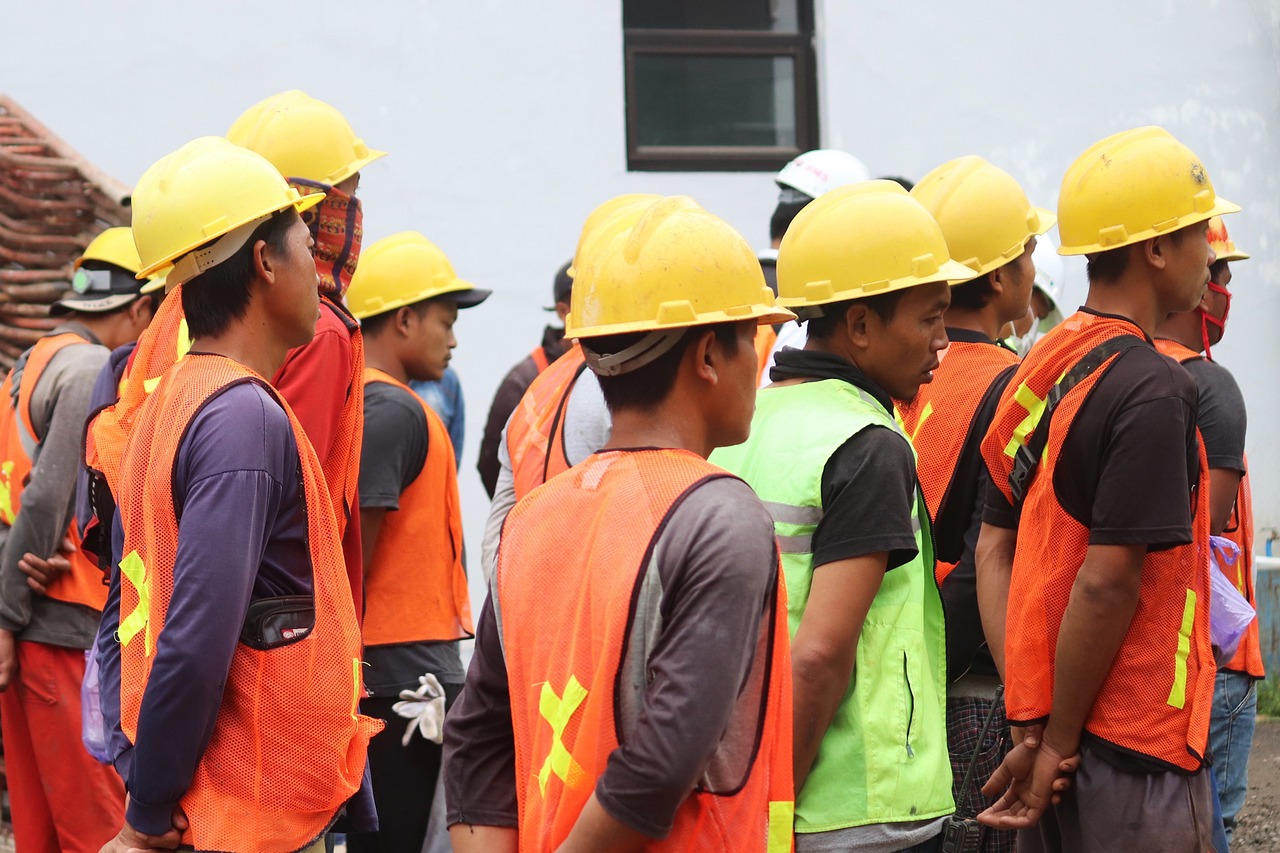
Strategies for Improving Safety Culture
Improving safety culture within an organization is not just a checkbox exercise; it requires a comprehensive approach that engages every individual from the ground up. When we talk about safety culture, we're referring to the shared values, beliefs, and practices that prioritize safety in the workplace. So, how can we transform this culture into one that genuinely values safety? Here are some effective strategies to consider.
First and foremost, communication is key. Open lines of communication create an environment where employees feel comfortable discussing safety concerns without fear of retribution. Regular safety meetings, suggestion boxes, and anonymous reporting systems can encourage dialogue. It’s crucial that management actively listens to employee feedback and takes action when necessary. When employees see their concerns being addressed, it fosters trust and a sense of ownership over safety practices.
Next, involvement plays a significant role in enhancing safety culture. Encourage employees to participate in safety committees or task forces. This not only empowers them but also gives them a voice in shaping safety policies. When team members are involved in the decision-making process, they are more likely to adhere to safety protocols because they feel a personal connection to the outcomes. It’s like being part of a sports team; when you contribute to the game plan, you’re more motivated to play your best.
Another critical aspect is to implement a robust training program. It’s not enough to have a one-time safety training session; ongoing education is essential. Tailor training sessions to the specific needs of your workforce and ensure they are engaging and interactive. For instance, using real-life scenarios and role-playing can help employees understand the implications of their actions in a tangible way. Moreover, consider integrating technology, such as virtual reality, to simulate hazardous situations. This immersive experience can significantly enhance retention and awareness.
Furthermore, recognition and rewards can effectively motivate employees to prioritize safety. Establish a recognition program that rewards individuals or teams who demonstrate exemplary safety practices. This could be as simple as verbal recognition in meetings or more formal awards. The idea is to celebrate safety achievements, creating a positive reinforcement cycle that encourages others to follow suit.
To support these strategies, it’s essential to establish clear policies and procedures. Ensure that safety protocols are well-documented, easily accessible, and communicated to all employees. This not only provides clarity but also sets expectations for behavior. Regularly review and update these policies to reflect any changes in regulations or workplace conditions. It’s like having a map; without it, you risk getting lost in the complexities of safety requirements.
Finally, it’s important to measure and evaluate the effectiveness of your safety culture initiatives. Implement metrics to assess safety performance, such as incident rates and employee feedback surveys. This data can provide invaluable insights into what’s working and what needs improvement. Regularly revisiting these metrics allows organizations to adapt and evolve their safety strategies, ensuring continuous improvement.
In conclusion, improving safety culture is a multifaceted endeavor that requires commitment, communication, and continuous evaluation. By fostering an environment where safety is prioritized, organizations not only protect their employees but also enhance overall productivity and morale. Remember, safety is not just a policy; it’s a way of life.
- What is safety culture?
Safety culture refers to the shared beliefs, practices, and attitudes that shape how safety is prioritized within an organization.
- Why is communication important in safety culture?
Effective communication fosters trust and encourages employees to report safety concerns without fear, leading to a safer workplace.
- How can I involve employees in safety initiatives?
Encourage participation in safety committees and solicit feedback through surveys and suggestion boxes.
- What role does training play in improving safety culture?
Ongoing training helps reinforce safe practices and keeps employees informed about the latest safety protocols.
- How can I measure the effectiveness of safety culture initiatives?
Use metrics such as incident rates and employee feedback to evaluate the success of your safety programs.
Frequently Asked Questions
- What is the significance of human behavior in safety measures?
Human behavior is crucial in safety measures because individual actions and perceptions directly influence overall safety in various environments. When people understand the importance of their behavior, they are more likely to adhere to safety protocols, reducing the risk of accidents and injuries.
- How can organizations improve safety compliance among employees?
Organizations can improve safety compliance by understanding the psychological factors that influence behavior. Implementing effective training programs, fostering a culture of safety awareness, and providing constructive feedback are essential strategies. Additionally, promoting peer influence can enhance compliance as employees are likely to follow the safety practices of their colleagues.
- What role does leadership play in establishing a safety culture?
Leadership plays a pivotal role in cultivating a strong safety culture. Leaders who demonstrate commitment to safety can inspire and motivate employees to prioritize safe practices in their daily activities. By leading by example and actively engaging with safety initiatives, leaders can significantly influence the overall safety mindset within an organization.
- How do personal experiences affect safety behavior?
Personal experiences, whether positive or negative, greatly shape an individual's approach to safety. Past incidents can serve as powerful reminders of the importance of safety precautions, leading individuals to adopt more cautious behaviors in the future. Organizations can leverage these experiences in training sessions to highlight real-life implications of safety practices.
- What strategies can be implemented to improve safety culture?
To improve safety culture, organizations should focus on several strategies, including regular safety training, encouraging open communication about safety concerns, and recognizing safe behaviors among employees. Additionally, creating a supportive environment where employees feel comfortable reporting unsafe conditions can foster a proactive approach to safety.
- What are behavioral-based safety programs?
Behavioral-based safety programs are initiatives designed to modify individual behaviors to enhance safety. These programs focus on observing and reinforcing safe practices while identifying and addressing at-risk behaviors. By promoting a positive safety culture, these programs can significantly reduce workplace incidents and improve overall safety outcomes.
- How does peer influence impact safety practices?
Peer influence is a powerful factor in shaping safety behaviors. When team members actively promote and adhere to safety practices, it creates a collective responsibility that encourages others to follow suit. Conversely, negative peer pressure can undermine safety compliance, making it essential for organizations to cultivate a positive safety culture among teams.
- Why is risk perception important in safety decision-making?
Risk perception significantly influences decision-making processes regarding safety. Individuals who accurately assess risks are more likely to take appropriate precautions. Understanding how people perceive risks can help organizations tailor their safety training and communication strategies to improve safety outcomes.






